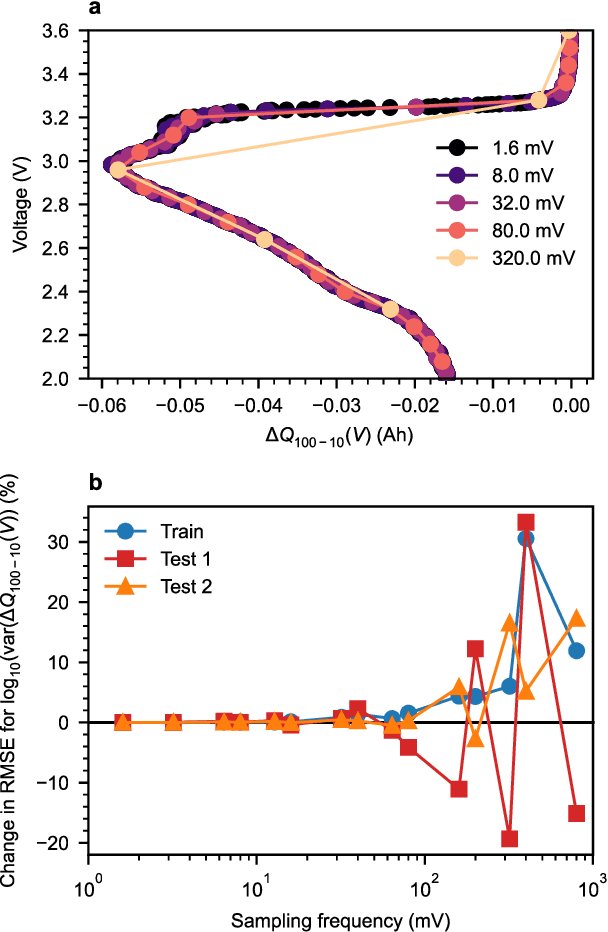Jeremy D. Witmer
Statistical learning for accurate and interpretable battery lifetime prediction
Jan 06, 2021



Abstract:Data-driven methods for battery lifetime prediction are attracting increasing attention for applications in which the degradation mechanisms are poorly understood and suitable training sets are available. However, while advanced machine learning and deep learning methods offer high performance with minimal feature engineering, simpler "statistical learning" methods often achieve comparable performance, especially for small training sets, while also providing physical and statistical interpretability. In this work, we use a previously published dataset to develop simple, accurate, and interpretable data-driven models for battery lifetime prediction. We first present the "capacity matrix" concept as a compact representation of battery electrochemical cycling data, along with a series of feature representations. We then create a number of univariate and multivariate models, many of which achieve comparable performance to the highest-performing models previously published for this dataset. These models also provide insights into the degradation of these cells. Our approaches can be used both to quickly train models for a new dataset and to benchmark the performance of more advanced machine learning methods.
 Add to Chrome
Add to Chrome Add to Firefox
Add to Firefox Add to Edge
Add to Edge